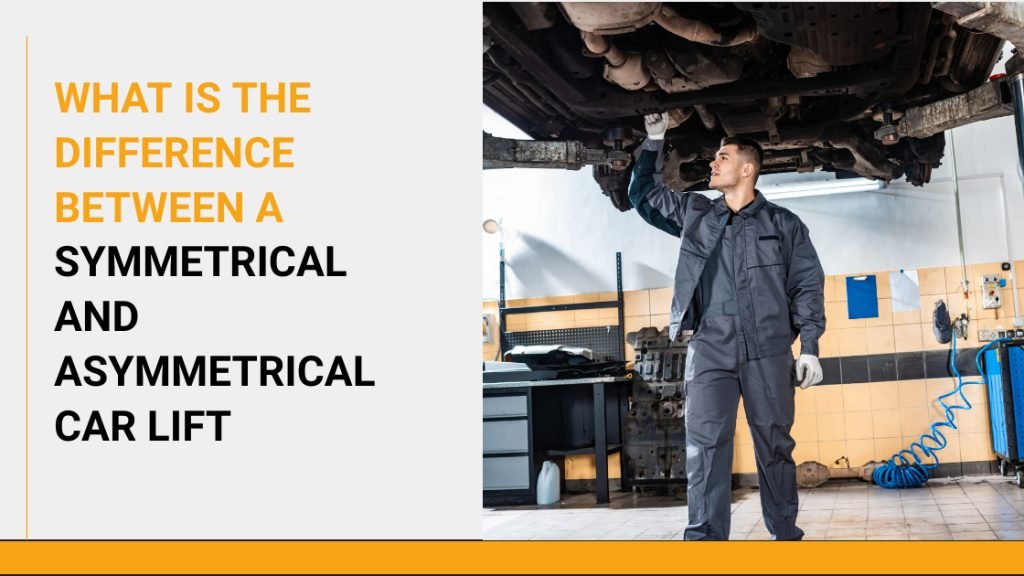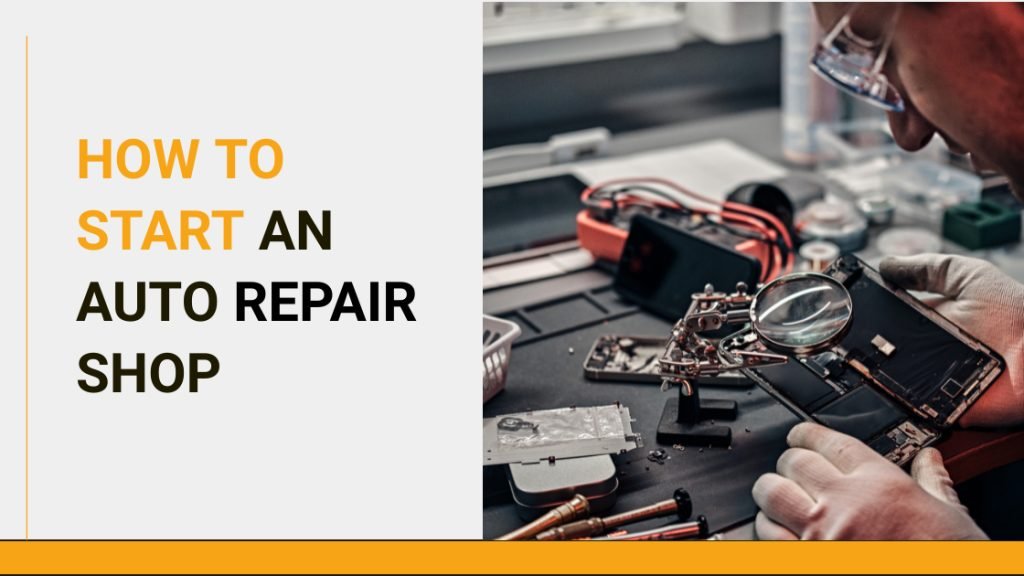
Selecting the right car lift for your shop is a big deal and a much-needed investment. There are two main types of car lifts: symmetrical and asymmetrical. But how would you know which one suits your needs more specifically?
If you think it is easy, then think about it for a while: the weight of the vehicle, how high your ceiling is, and most importantly, keeping things safe, are all huge concerns, aren’t they? We definitely do not want you to worry because we are here to help!
We’ll break it down for you in simple terms. Imagine we’re having both installed at one place. On one side, there’s the symmetrical lift, and on the other, the asymmetrical is standing. Each one has its own pros and cons. We will mention them so you have a big-picture view of which one to pick from the two available options.
Let’s find the right one for you!
What Are Two-Post Car Lifts?
Is it already a part of research? We must say you are on track. The two-post car lifts are usually available in drive-in shops and can easily be located in every auto repair shop. So, the operation of this car lift relies on its four arms, which could quickly help you lift the car and do the deal you do by balancing the center of gravity.
So, is it versatile? Yes, it is! The versatility of the two-post car lift is the feature that makes it appealing and accessible. The execution of required maintenance underneath the cars is more accessible because of its advanced capacity to lift cars. With it, you can efficiently work with the car engine and gearbox, which is a plus point.
A two-post car lift is best if your shop has a lower ceiling. It works for light trucks, vans, and standard vehicle sizes. In weight terms, it can easily lift up to 20,000 pounds altogether, but it depends on the lift in most cases.
Additionally, installing this two-post lift to the ground increases its durability for long-term use. However, the charge will be kept stationary if it is not a problem.
Kinds of The Two-Post Lifts
So that you know, there are three types of two-post car lifts listed below:
- Symmetrical lifts
- Asymmetrical lifts
- Super symmetrical lifts
The two main types of car lifts stand out while picking up the right for your auto-repair choice. However, super symmetrical is also worth mentioning because it is among the popular choices due to its contemporary design.
You must now be wondering the difference between the two car lifts. And for your auto repair business, which one should you pick?
Let us begin seeing them individually now!
Symmetrical vs Asymmetrical Lifts - Know the difference!
Let us explain how the arm design of a lift affects its performance because that is where the difference can be spotted. There are two types of arm configurations: symmetric and asymmetric.
Symmetric lifts have the same kind of arms in the front and back, with equal length and shape. Asymmetric lifts have different types of arms in the front and back, with varying lengths and shapes.
In the old days, most garage lifts were embedded in the floor with one column. These lifts had adjustable arms that could handle many kinds of vehicles. They were convenient but also required a lot of money to install and maintain. They could also cause environmental problems if hydraulic oil spilled into the soil.
Post lifts that sit on top of the ground were invented to avoid these issues. The posts were initially placed in the middle, which only worked for some vehicles and made it hard to get in and out of the car as you aligned it for lifting. That’s why an asymmetric lift option was created. This lift can fit different types of cars without blocking the doors.
Key Facts About Symmetrical Car Lifts
Symmetrical two-post lifts were the first of their kind to enter the market. They have two poles that face each other and four arms that are equally long.
These features align the vehicle’s center of gravity with the middle of the lift, both horizontally and vertically, with a balanced 50% load on each side. This also creates more space for driving through the lift.
This lift type works well for vehicles with long wheelbases like trucks.
Some notable features
Symmetrical car lifts have some great features, such as:
- Poles that are opposite to each other
- Four arms that have the same length
- 50/50 weight distribution
- Overhead or floor plate design
- Ability to lift older, heavier metal vehicles (like SUVs and trucks)
- 10,000-pound to 20,000-pound lifting capacity
- User-friendly functionality
You may wonder why all two-post car lifts are not asymmetrical for easier door access. That’s because vehicles come in different shapes and sizes. It would be best if you considered the vehicle’s:
- Total length
- Wheelbase
- Front door position
- Weight distribution (% of the weight over the front and rear axles)
- Extra weight loaded in the vehicle
Some drawbacks
There are some potential downsides to choosing a symmetrical car lift for your auto repair business.
The position of the poles may cause accidental damage to your customers’ vehicles and make it hard to access the interior once lifted.
In short, symmetrical car lifts are less flexible than asymmetrical car lifts.
Key Facts About Asymmetrical Car Lifts
The distance you have to drive over an asymmetrical car lift differs from a symmetrical one. This is because the front arms are slightly shorter than the rear arms. The columns can rotate by 30 degrees to adjust and balance the vehicles properly.
What makes asymmetrical car lifts unique?
Asymmetrical car lifts have some distinctive features that set them apart from symmetrical lifts:
- They were designed after the symmetrical lift to suit lighter-built vehicles
- They have 30-degree rotation capabilities in the column – allowing for the vehicle to be shifted on the lift
- They make it easier to get in and out of the car with door openings, reducing the risk of damaging doors from hitting the post
- They distribute the weight of the vehicle as 1/3 on the front arms and 2/3 on the rear arms
- They can lift between 7,000 pounds and 10,000 pounds
- The front arms are shorter than the rear arms
Some drawbacks
Asymmetrical car lifts also have some disadvantages that shops should be aware of. One of them is that they can cause problems for vehicles with short wheelbases.
These vehicles can become unstable or even fall over if they are not centered on the asymmetrical lift. When raising or lowering a vehicle with a short wheelbase, stability issues may occur because the front lift arms are much shorter than the rear lift arms.
This makes it difficult to ensure that the car is lifted evenly, which could harm the car and make the repair process unsafe.
Key Facts About Super Symmetrical Car Lifts
One of the latest innovations in car lift technology is the super symmetrical car lift, which combines the features of both symmetrical and asymmetric lifts to offer more flexibility. These lifts have front arms with three stages and rear arms with two stages, which can be aligned with each other.
Unlike the front asymmetrical arms, the front super symmetrical arms cannot rotate all the way to the back of the car. However, thanks to the three-stage design, they can be adjusted to fit small cars or extended to match the rear arms for longer cars. This type of car lift is not very common among two-post car lifts.
Wrapping it!
So now you know about the types of lifts more precisely. Choosing the right lift depends on the types of vehicles and overall shop layout. But your personal preference matters too. It is not just the asymmetric or symmetric design that counts, so choose wisely because the lift you pick impacts your work.
The automotive lifts are for lighter vehicles and heavier vehicles, so based on your preferences, opt for the one that has a maximum lifting capacity.



